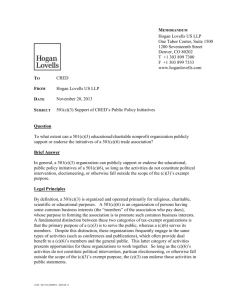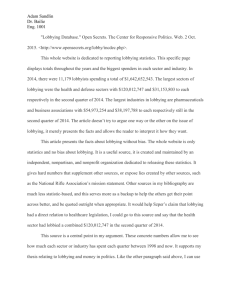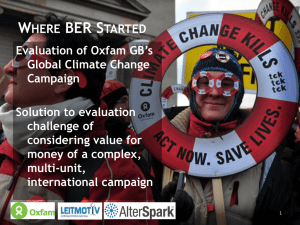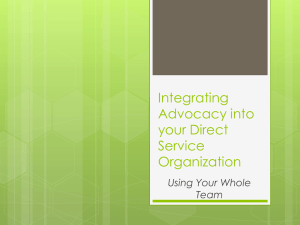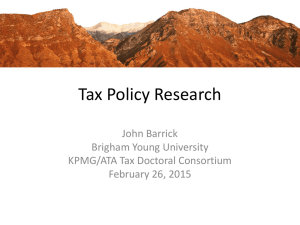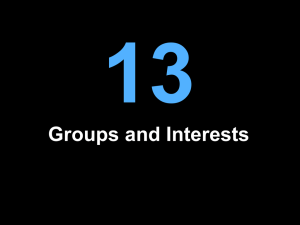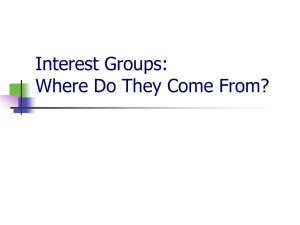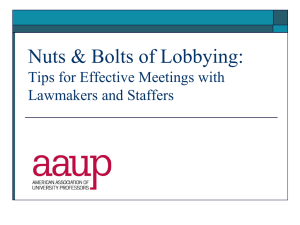Nonprofit Management - masonnonprofitfellows
advertisement
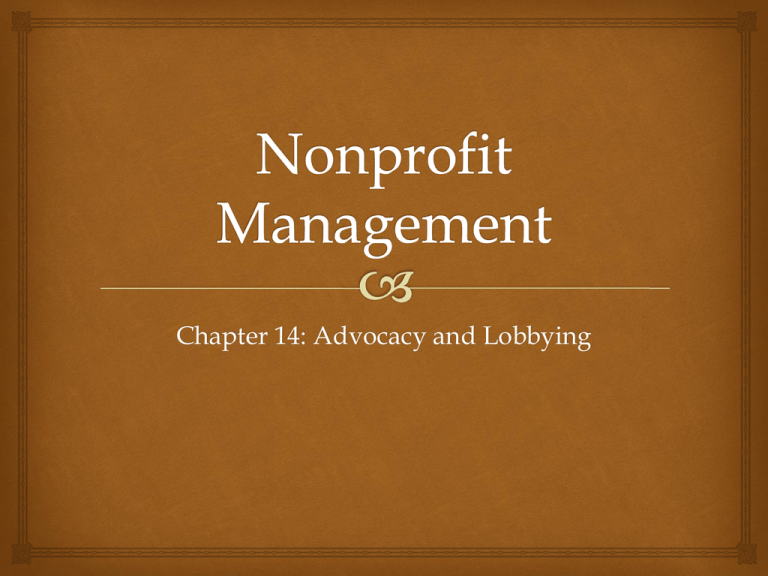
Chapter 14: Advocacy and Lobbying Stages in the Life Cycle of a Social Change Issue (Andreasen, 2006) Stage 1: Inattention to the problem Stage 2: Discovery of the problem Stage 3: Climbing the agenda Stage 4: Outlining the choices Stage 5: Choosing courses of action Stage 6: Launching initial interventions Stage 7: Reassessing and redirecting efforts Stage 8: Achieving success, failure, or neglect Terminology Advocacy -- action taken to support a general cause Lobbying -- action taken to support or oppose specific legislation Political campaign activity -- action taken in support of or opposition to specific candidates for office Nonprofit Ambivalence about Lobbying Less than two percent of nonprofit organizations engage in lobbying Larger, national organizations Organizations in fields that are significantly regulated Reasons for ambivalence Belief that lobbying is irrelevant to the mission Belief that lobbying is inappropriate Inadequate staff or resources Concern about alienating current or potential funders Lack of clarity about the law Overview of Lobbying Law for Nonprofits 501(c)(4) -- can engage in lobbying essentially without restriction 501(c)(3) -- limited in lobbying activity and prohibited from political campaign activity Tax deductibility of gifts as public subsidies Private foundations versus public charities Sections 4911 and 501 of the Internal Revenue Code Substantial part test 501(h) expenditure test Other laws related to lobbying practice Lobbying Disclosure Act Gift rule Political Campaign Activity Charitable nonprofits are prohibited from engaging in campaigns and from endorsing candidates, either implicitly or explicitly Coordinating their activities with those of a candidate or a campaign Contributing money or time to work for a candidate Contributing the use of their facilities for a candidate or campaign Citizens United v. FEC (2010) Applies to business corporations and nonprofits exempt under Section 501(c)(4), 501(c)(5), and 501(c)(6) Constants Cannot make monetary or in-kind contributions directly to candidates for federal office Cannot coordinate their communication with candidates’ campaigns Key change Can make independent expenditures from their general treasury to expressly support or oppose candidates for federal office Best Practices for Advocacy and Lobbying Determine the reason for lobbying and how it advances the nonprofit’s mission Understand the legislative process Identify the sources of funds Undertake research Develop an understanding of relevant public policy issues Obtain data needed to make the case with legislators Develop an infrastructure to support the lobbying program Inventory existing relationships and identify decision makers Use a strategic mix of tactics Debate About Nonprofit Advocacy Push for increased involvement by nonprofits in electoral politics Virtuous cycle between advocacy and program delivery (Crutchfield and Grant, 2008) Efforts to obtain legislative action but ignore political realities are naïve (Hessenius, 2007) Reasons for concern Potential for unethical use of nonprofit organizations Jack Abramoff and the Capital Athletic Foundation Unwillingness of taxpayers to subsidize partisan political activities by nonprofits FORCES FOR GOOD Advocate and Serve Make Markets Work Inspire Evangelist Nurture Nonprofit Networks Master the Art of Adaptation Share Leadership


